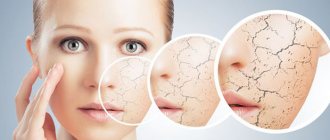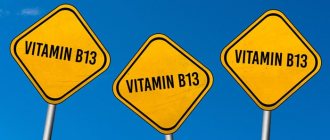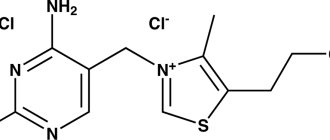Amway, December 18, 2019
The importance of vitamin D for the body cannot be overestimated. It is responsible for a number of important biochemical processes:
- helps the absorption of calcium and phosphorus, “opening” the cells of bone tissue, teeth and nails to receive these minerals;
- normalizes blood sugar levels;
- speeds up metabolism;
- synthesizes monocytes, which purify the blood;
- stimulates the synthesis of a number of hormones;
- improves the transmission of impulses between neurons;
- affects the development of the embryo.
With proper consumption of vitamin D, bones and muscles are strengthened, blood composition is improved, dry hair and skin disappears, the risk of the appearance and development of oncology and diabetes is reduced, immunity, efficiency, and concentration are increased, the functioning of the thyroid gland and heart is improved, and blood pressure is regulated.
Types of Vitamin D
Vitamin D, or calciferol, is the general name for a group of biologically active substances - fat-soluble vitamins D1, D2, D3, D4, D5, D6. Two of them are beneficial for human health:
- ergocalciferol (vitamin D2) and
- cholecalciferol (vitamin D3).
Ergocalciferol enters the body from the outside - along with plant foods (juices, grains, mushrooms). But cholecalciferol is synthesized by the body itself under the influence of ultraviolet radiation. This is why it is also called a “natural” vitamin. In addition, it is found in foods of animal origin - fatty fish, yolks, butter, etc. According to scientific research, D3 is approximately 30% more active in human life, which means that this particular type of calciferol is especially useful.
Storing and preparing foods with vitamin D
Of course, it is best if you always have the freshest products on your table. However, it is not always possible to purchase everything regularly; usually there is some reserve left. So, storing it doesn’t require any tricks; it’s enough just to keep them in the cold. Just do not allow access to light and oxygen. They are the ones who can destroy the desired vitamin.
But freezing does not bring the slightest harm to calciferol, because it is fat-soluble. The only condition is defrosting due to natural causes. You should not use hot water or a microwave to help foods become soft.
Fat solubility makes vitamin D resistant to high temperatures. Therefore, there are no restrictions on the preparation method. But a person who is thinking about getting vitamins into his body is probably an adherent of the principles of proper nutrition. Therefore, it is better to prefer steaming or stewing.
In winter, it’s better to treat yourself to delicious scrambled eggs for breakfast. If you don't mind raw eggs, you can drink one to replenish your calciferol supply. There is a wonderful and tasty dish - eggnog. Sometimes it doesn’t hurt to drink coffee with a bun, greased with butter. By the way, the latter can also be spread on bread. There is a source of vitamin D to suit everyone’s taste, regardless of food preferences and beliefs.
Vitamin D deficiency
Vitamin D deficiency is a very common problem in Russia. After all, most of our territory is included in the zone of reduced insolation. In addition, vitamin D is synthesized by the body only if the sun's rays hit the skin at a certain angle, which is observed from 11 a.m. to 2 p.m. For children, this time may coincide with lunch or bedtime, while for adults it may be at work. Factors that lower vitamin D levels include constant use of sunscreen during the summer and bad habits such as smoking and excessive alcohol consumption. Studies conducted in different regions of Russia have shown that vitamin D deficiency among Russian children under three years of age is approximately 24%, and its deficiency is 42%. And hypovitaminosis is especially acute in the winter period of the year - from late November to early March. Thus, more than 2/3 of children need additional vitamin D.
Symptoms in adults
Vitamin D deficiency can be detected through clinical and laboratory tests. The following symptoms should be a signal that it’s time to go to the doctor:
- chronic fatigue,
- irritability, nervousness,
- problems with stool
- sleep disorder,
- caries,
- decreased vision,
- bone loss and bone fragility,
- aching pain in bones and joints,
- increased sweating of the occipital region,
- cramps, nagging muscle pain,
- dryness, flaking of the skin,
- alopecia,
- loss of appetite, anorexia,
- overweight,
- frequent respiratory tract infections.
As we can see, the symptoms from this list are not specific. And based on them it can be difficult to make an accurate diagnosis. Therefore, those who suspect they have calciferol vitamin deficiency should be tested for 25-hydroxyvitamin D (25 (OH) D). If your level is in the range of 30-100 ng/ml, there is no need to worry. A reading of less than 20-30 ng/ml indicates vitamin D deficiency, and less than 10 ng/ml is diagnosed as a deficiency, in which case immediate action should be taken. Read more about the importance of vitamin D for women.
Symptoms in children
Calciferol is involved in the development of the embryo and the formation of innate immunity, so children should receive this vitamin even before birth, during the prenatal period. In childhood, when the child's skeleton, teeth and muscular structure are actively developing, adequate levels of vitamin D are very important. Symptoms of a deficiency of this vitamin in children include:
- increased tearfulness, excitability and sleep disturbances;
- growth retardation;
- slowing down the closure of the fontanel;
- weight loss;
- profuse sweating, especially during sleep;
- rickets, changes in the skeletal system (bent legs, enlarged head, flat back of the head, too convex forehead).
Read more about vitamin D for children.
At-risk groups
- Patients with liver, kidney and intestinal diseases. Vitamin D is activated in the liver and kidneys, so in people with diseases of these organs the process is disrupted.
- People with dark skin. A large amount of melanin in dark or tanned skin protects it from UV rays, which reduces the amount of cholecalciferol synthesized.
- Pregnant and lactating women. The developing skeleton of the embryo requires a large amount of calcium and calciferol - it receives them from the mother's body. During lactation, calcium is also washed out of the body, so nursing mothers, as a rule, do not have enough vitamin D and are recommended to take vitamin complexes.
- People over 60 years of age. With age, the absorption of fat in the intestines deteriorates, which affects the absorption of fat-soluble vitamin D.
- Overweight. Being a fat-soluble vitamin, calciferol dissolves in adipose tissue without having time to participate in a number of biochemical processes. Thus, the requirement for vitamin D is higher in obese people.
- Residents of the northern regions are practically deprived of sunshine, so they can replenish their supply of vitamin D only through food, dietary supplements and medications.
- Vegetarians. This is easily explained by the lack of animal foods containing vitamin D in their diet.
Eating foods rich in vitamin D
To make more full use of the product resource, you need to know what the secret of success is. And it lies in its very nature - it is fat soluble. This means that dishes should be seasoned with something containing a large amount of fat. These could be oils, full-fat sour cream or yogurt. In this case, there will be intensive absorption of vitamin D into the blood and optimal distribution throughout the human body. But if you eat fatty fish, then you don’t have to flavor it with anything else. Her own fat is enough for the effect you need.
Since childhood, we have learned that we need to drink milk in order to avoid rickets. But milk is a very “low-quality” source of vitamin D. The fact is that the phosphorus present in milk does not allow it to be absorbed normally. Therefore, our childhood belief is mostly a myth.
You also need to remember that even if you consume all of the above products at once, you can remain with vitamin deficiency. The fact is that for the desired effect, regular exposure of the skin to sunlight is necessary, and preferably the skin of the extremities. The best time for healthy sunbathing is from 9 a.m. to lunch, until 1 p.m. The fairer skinned you are, the less time you need to spend in the sun for this purpose. And if you have dark skin, are overweight, have reached old age, or shield your arms and legs from ultraviolet radiation, vitamin D deficiency will be more difficult for you to combat.
Excess vitamin D
Calciferol hypervitaminosis is a rarer phenomenon in our latitudes. The cause of calciferol oversaturation is often an overindulgence in vitamins. In this case, hypervitaminosis occurs, that is, a condition when the level of hydroxyvitamin D exceeds 100 ng/ml. Calcium salts begin to be deposited in muscles, internal organs, and skin, which negatively affects their condition and function. Hypervitaminosis provokes blurred vision, kidney failure and the appearance of stones. The passion of some young mothers for vitamins can lead to an excess of calciferol in the child’s body. Therefore, treatment and choice of medications for the child should be carried out as prescribed by the pediatrician. It takes into account the appearance of the newborn, as well as the type of feeding on which he is. For example, if you feed your child with milk formulas, then vitamin D is already included in their composition in the required amount, which means there is no need to use drugs to prevent its deficiency. While mother's milk, especially in winter, may contain insufficient amounts of this vitamin.
Among the signs of excess calciferol in children and adults:
- insomnia;
- frequent urination, diarrhea and vomiting;
- skin rashes;
- muscle cramps;
- irritability.
In addition, in children, an excess of vitamin D increases the symptoms of other diseases. Skin rashes or loose stools are sometimes mistaken for an allergy to vitamin D. In fact, it is simply an overdose that disrupts the liver and causes reactions similar to allergic ones.
Norm per day
How much of this substance is required for the average person per day? On average - from 2.5 to 5 mcg. But even this average dose increases significantly under the following conditions:
- if a person does not go to the sun;
- “sits” on a strict diet;
- is over 60 years of age (10 mcg);
- lives in northern latitudes;
- grows rapidly (15-20 mcg);
- in women during lactation and pregnancy (25 mcg);
- for bodybuilders and professional athletes (120 mcg)
An important point: it is important to combine treatment with doses of vitamin D with doses of ascorbic acid and retinol (vitamin A).
Vitamin D, what is it and how much should you take per day on video:
How to increase vitamin D levels in the body
The content of calciferol in the body can be increased through sunbathing or UV lamps, as well as through food rich in vitamin D or dietary supplements.
Ultra-violet rays
The easiest and most natural way to increase your vitamin D levels is to spend more time in the sun. The ultraviolet spectrum of sunlight consists of three fractions of rays: UV-A, UV-B and UV-C. The synthesis of cholecalciferol requires B-fraction rays, which do not pass through the glass window. Therefore, it is recommended to catch them only in the fresh air. It should also be remembered that clouds and urban smog can retain up to 50% of ultraviolet radiation. The minimum duration of sunbathing should be 20-30 minutes a day from 11 a.m. to 2 p.m. Unfortunately, it is during these hours in the summer that you are most likely to get a sunburn. And the use of sunscreens with an SPF factor higher than 8 units block the production of vitamin D. Therefore, it is necessary to weigh the dangers and benefits of such tanning. If you can’t be in the sun, you can use a solarium. The rays of UV lamps are not equivalent to those of the sun, but they partially compensate for the deficiency of natural ultraviolet radiation. However, unreasonable use of a solarium can cause premature skin aging, pigmentation and even the appearance of melanoma.
Nutrition
A lot of vitamin D is found in fatty fish, eggs, some types of cheese, animal oil, milk and mushrooms. The table shows the amount of cholecalciferol contained in 100 grams of products.
| Product (100 g) | Vitamin D content (in mcg) |
| Fish fat | 250-350 |
| Cod liver | 100-200 |
| Pink salmon, salmon, mackerel, chum salmon, herring, trout, eel, halibut | 10-30 |
| Black caviar | 8 |
| Egg yolk | 7,7 |
| Goat milk | 1,3 |
| Butter | 1,5 |
| Hard cheeses | 1 |
dietary supplements
Unfortunately, our lifestyle does not always allow us to track the amount of nutrients in our diet. In this case, you can take a variety of vitamin complexes from Amway, which will help maintain normal daily calciferol balance. NUTRILITE Omega-3 with Vitamin D are jelly lozenges for children that are easy to swallow, dissolve quickly, are well absorbed and do not leave an unpleasant aftertaste. One lozenge covers up to 80% of the daily dose of vitamin D. NUTRILITE children's chewable lozenges contain calcium, magnesium and vitamin D, necessary for rapid growth of the child. One lozenge contains approximately 30% of the daily requirement of calciferol. Calcium, magnesium, vitamin D complex NUTRILITE is a biologically active food supplement for adults. Regular use of this drug keeps bones strong and reduces the risk of fractures. The drug is suitable for older people, as well as those who play sports and want to maintain flexibility and mobility. Each tablet contains a daily dose of calciferol. It is convenient to purchase drugs at a minimal cost through the Amway website. All you need to do is select the products you need and arrange delivery to Moscow or another city in Russia.
Products containing vitamin D
In order not to lack vitamin D, you need to know the foods that contain it. Of course, in pharmacies there are all sorts of medications that make up for the deficiency, but not a single synthetic drug is absorbed in the body like a natural one. At the same time, as a source of these substances, it is worth choosing to a greater extent those products that originate and are grown in your region, rather than those imported from afar. They will be more useful. That is, if you have an apple tree growing in your garden, it is better to choose its fruits than buy a banana or avocado.
So, we find vitamin D in food, the table looks extremely simple:
| Product, 100g | Vitamin D, IU/100 g |
| Fish fat | 160 |
| Fatty fish | 45-280 |
| Caviar | 100-200 |
| Some mushrooms from the natural environment (for example, chanterelles) | 80-160 |
| Alfalfa shoots | 192 |
| Nettle | 180 |
| Parsley | 27 |
| Dill | 27 |
| Egg yolk | 27 |
| Butter | 35 |
| Meat | 15 |
| Corn oil | 10 |
| Milk | 0,5-3 |
| Cheese | less than 0.5 |
Of course, there are other foods that contain vitamin D, such as other herbs, but the inability of humans to digest large amounts of herbs makes them not a very useful source of this substance. But the table contains the most significant sources.











